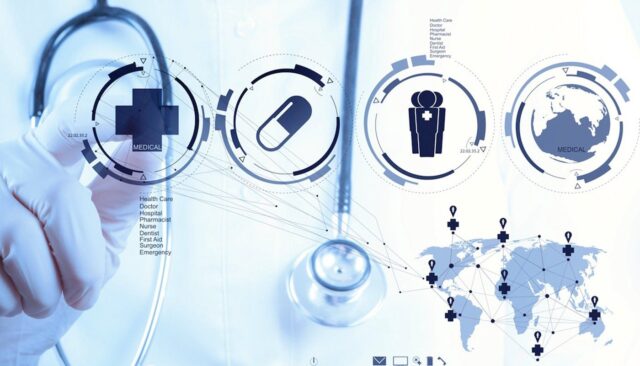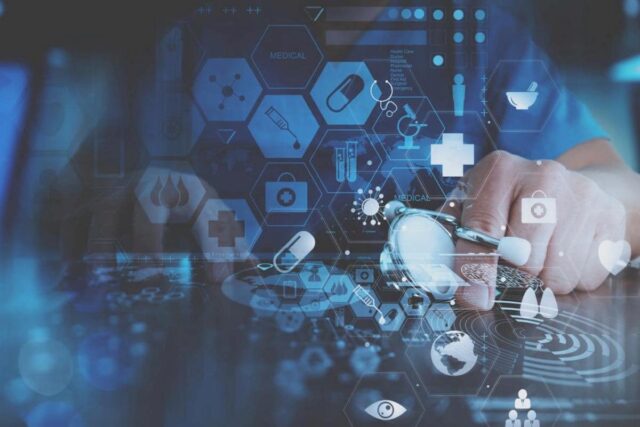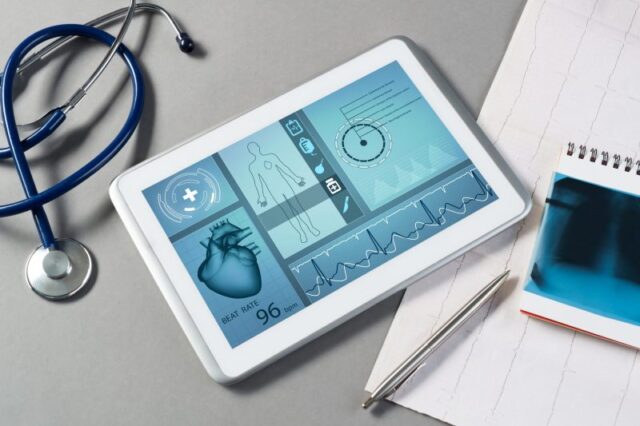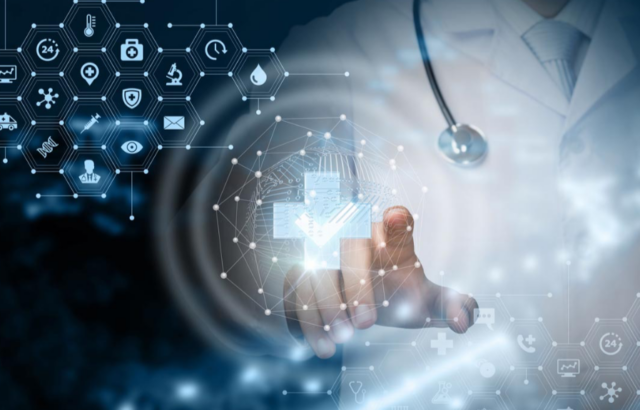
Digital transformation, the process of driving organizational change, is aimed at improving existing and creating new services and processes – with the newest technologies aid.
Digital transformation of healthcare concerns practically all aspects of medical care. The challenging industry benefits from the newest discoveries related to hardware, software, and comparable services. What happens at the intersection of technology and medicine?
What are the most disruptive examples of digital transformation in healthcare?
The impact of technology on everyday life is rapidly growing, no wonder it’s widely adopted into various processes across industries. Still, some remain cautious, being uncertain of the impact digital solutions will have on sectors like healthcare.
Are there real concerns? We may be biased due to the image of technology brought to the wider public through sci-fi movies, where machines rise and instead of aiding humans, their intentions turn out to be the opposite.
Surely, including algorithms, robots, and other technologies in life-saving processes needs to be executed with care (just like any other novelties introduced into healthcare), development of future-proof, accessible technologies helps create more efficient life-saving solutions that benefit humanity worldwide.
The medical field caters to a huge demand of varied needs, at the same time, struggling with numerous challenges. Lack of personnel, knowledge outflow, difficulties in direct access to professional care, and the accuracy of diagnoses – inhibit delivery of sufficient healthcare services.
Creating cutting-edge digital healthcare opportunities allows for answering the needs with better care services, as a result – improving the life quality of millions of patients globally.
Examples of digital transformation of healthcare
Telemedicine

Using technology to connect in real-time with doctors allows long-distance communication, patient monitoring, supervision of drug efficiency, and remote admissions.
Delivering health services remotely via electronic and telecom technologies improves access to medical staff if direct contact is obstructed or impossible. Telemedicine is a means of equaling healthcare accessibility.
Efficient research

Top-notch digital solutions support human personnel in the quest for more efficient, safer, and faster-developed medications. Using dedicated trained algorithms enables the processing and analysis of microbiological images e.g. examining bacteria. Aside from software solutions, digital transformation in healthcare (https://neurosys.com/blog/digital-transformation-in-healthcare) can be boosted with the use of interconnected devices falling within the Internet of Things assembly. Physical devices like wearable monitors gather and transfer data (vital signs, blood pressure, sleep monitoring, biometric scans, monitoring of medication efficiency) used for insights into patients’ wellbeing and administering further prescriptions.
Accurate diagnostics

Artificial intelligence aids healthcare professionals in conducting examinations, making it possible to diagnose diseases in their early stages. AI models are trained using extensive datasets and can outperform human analysis in recognizing threats, e.g. in case of breast cancer. Boosting diagnostics with algorithms contributes to improved accuracy and speed of health protection services.
AI streamlines the execution of various medical procedures, in particular diagnostic measures (CT scans, X-rays, MRI, etc.), by spotting abnormalities in processed images. Using algorithms to assess diagnostic imaging leverages high accuracy in detecting unwanted symptoms.
Artificial intelligence has become an efficient tool in early cancer and cardiovascular disease diagnosis. Employing AI algorithms in examination and battling diseases contributes to greater diagnostic accuracy and speed, giving hope to patients.
Reduced workload
With algorithms automatically scanning patient files, filling up questionnaires, and searching for similar symptoms in previous medical records, personnel can focus on more demanding tasks.
Artificial intelligence algorithms can successfully recognize speech and text, leading to the extraction of details on patients’ status from clinical notes. Without going through extensive documentation, medical personnel gains access to structured, precise insights on patients’ condition, medication, and progress of treatment.
Patient portals
Secure online websites give patients convenient and safe access to their health information. Accessible anytime and from anywhere, Products like Experity patient portal aggregate details on test results, prescriptions, and recent and upcoming visits.
Portal users can conveniently contact medical professionals as there’s no need to spend time on the phone with the information line. The benefits? Access to own medical data, the convenience of digital communication, tracking therapy progress, and the emergence of tailor-made health services.
Improved training

eLearning became a necessity for students in the pandemic world, enabling them to continue studying even in times of the most strict regulations. The potential of delivering distance learning is visible in the healthcare field. Medical personnel needs lifelong learning to stay up-to-date with the changing environment, and their calendars are already full 3 months ahead.
For such busy staff, the opportunity to access digital training anytime and anywhere they please is priceless. Healthcare professionals use learning management systems and other advanced technologies, like augmented reality training platforms to stay informed and acquire knowledge in the most efficient, engaging way.
Benefits of digital transformation in healthcare
The advantages of technology are priceless for service providers and patients, leading to improvements in various areas.
Benefits include, but are not limited to:
- better and faster recognition of infectious diseases and their spreading
- improving the quality and availability of professional care
- reducing burnout among medical staff
- greater availability of medical services
- streamlining drug research, delivering new medicines to market
- upskilling the healthcare personnel
- standardizing knowledge
- reducing paperwork
Is the healthcare industry ready to fully benefit from digital solutions?

While there still are some challenges to overcome, the healthcare field is more than ready to employ digital technologies. The need for efficient, well-trained, modern, and cost-effective medical services will only grow, and healthcare providers globally must be ready to answer the increasing demand for technological improvement.
Digitalization is a chance to deliver accessible, future-proof healthcare to patients. With over 2 million life-saving and health-improving appliances and devices, bringing out the best that technology offers is the way to improve people’s living conditions around the world.
The dynamic, digitally-powered healthcare is developing right in time to address the challenges of the transforming world. The global population is aging, enforcing a change in the approach to patients.
Societies need to focus on providing sustainable care for the elderly and creating efficient healthcare systems. Thankfully, the above-mentioned technologies give hope to delivering inclusive, accessible care to citizens potentially prone to exclusion, in particular, due to aging.
What seemed to be a science-fiction scenario just a few decades ago, has now become reality. Technology providers still have challenges to address and obstacles to overcome, but digital transformation in healthcare is becoming our new reality.












